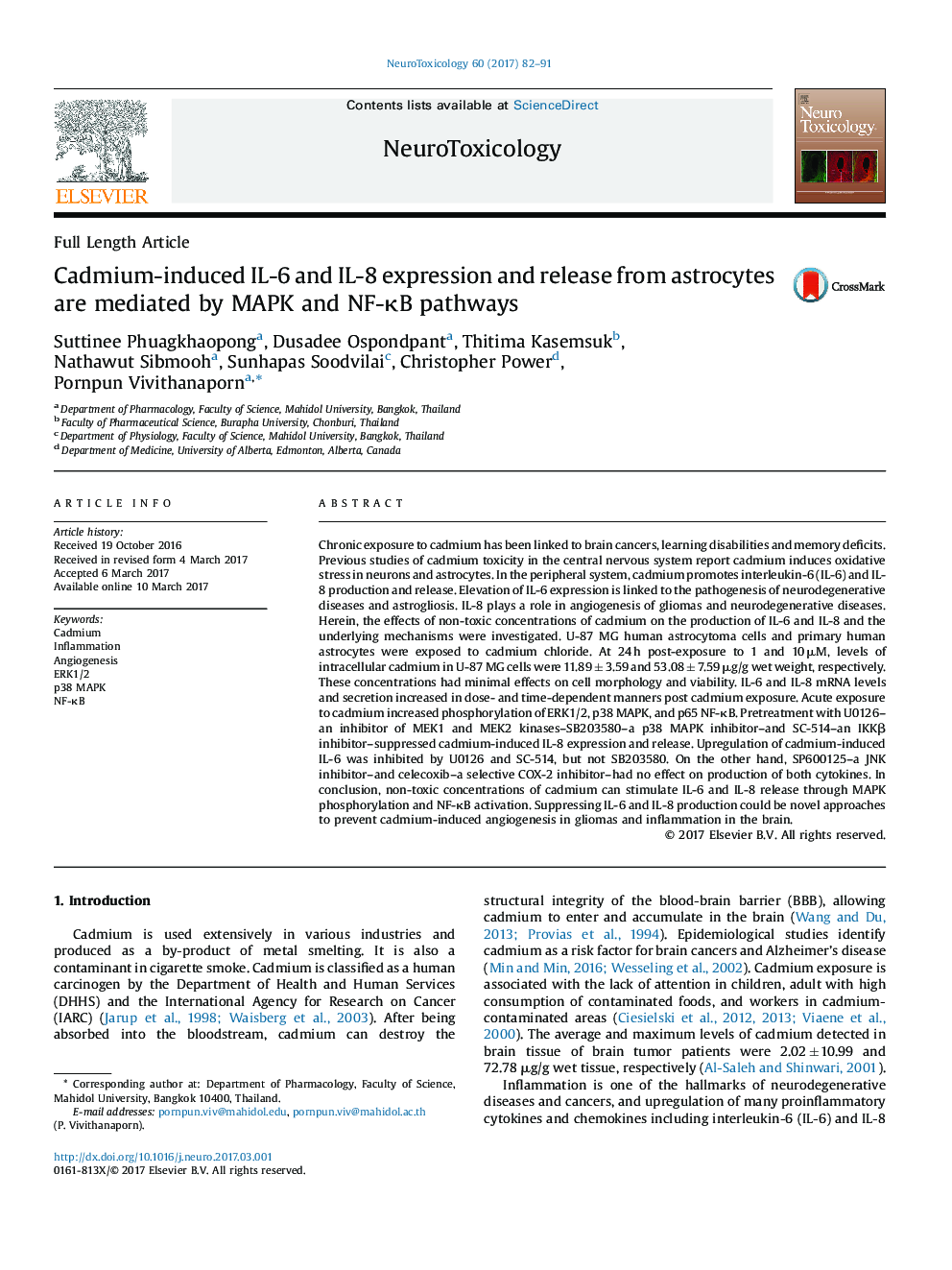| Article ID | Journal | Published Year | Pages | File Type |
|---|---|---|---|---|
| 5560825 | NeuroToxicology | 2017 | 10 Pages |
â¢Cadmium accumulated in cultured human astrocytes.â¢Cadmium, at non-toxic concentrations, stimulated IL-6 and IL-8 release from cultured human astrocytes.â¢Inhibition of ERK1/2 and NF-κB pathways decreased cadmium-induced IL-6 production in cultured human astrocytes.â¢Inhibition of ERK1/2, p38 MAPK and NF-κB pathways decreased cadmium-induced IL-8 production in cultured human astrocytes.
Chronic exposure to cadmium has been linked to brain cancers, learning disabilities and memory deficits. Previous studies of cadmium toxicity in the central nervous system report cadmium induces oxidative stress in neurons and astrocytes. In the peripheral system, cadmium promotes interleukin-6 (IL-6) and IL-8 production and release. Elevation of IL-6 expression is linked to the pathogenesis of neurodegenerative diseases and astrogliosis. IL-8 plays a role in angiogenesis of gliomas and neurodegenerative diseases. Herein, the effects of non-toxic concentrations of cadmium on the production of IL-6 and IL-8 and the underlying mechanisms were investigated. U-87 MG human astrocytoma cells and primary human astrocytes were exposed to cadmium chloride. At 24 h post-exposure to 1 and 10 μM, levels of intracellular cadmium in U-87 MG cells were 11.89 ± 3.59 and 53.08 ± 7.59 μg/g wet weight, respectively. These concentrations had minimal effects on cell morphology and viability. IL-6 and IL-8 mRNA levels and secretion increased in dose- and time-dependent manners post cadmium exposure. Acute exposure to cadmium increased phosphorylation of ERK1/2, p38 MAPK, and p65 NF-κB. Pretreatment with U0126-an inhibitor of MEK1 and MEK2 kinases-SB203580-a p38 MAPK inhibitor-and SC-514-an IKKβ inhibitor-suppressed cadmium-induced IL-8 expression and release. Upregulation of cadmium-induced IL-6 was inhibited by U0126 and SC-514, but not SB203580. On the other hand, SP600125-a JNK inhibitor-and celecoxib-a selective COX-2 inhibitor-had no effect on production of both cytokines. In conclusion, non-toxic concentrations of cadmium can stimulate IL-6 and IL-8 release through MAPK phosphorylation and NF-κB activation. Suppressing IL-6 and IL-8 production could be novel approaches to prevent cadmium-induced angiogenesis in gliomas and inflammation in the brain.
